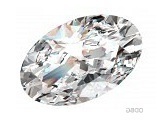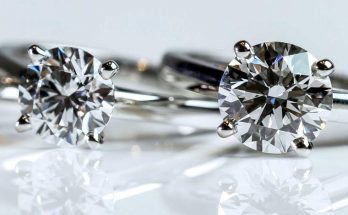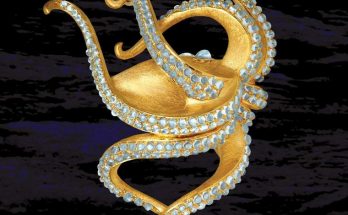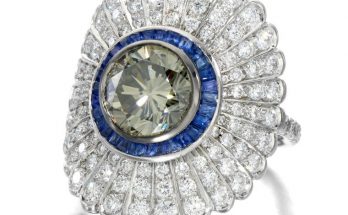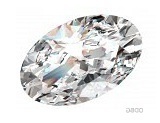 The oval brilliant cut is one of the more recent cuts introduced to the diamond industry and had since gained a great deal of popularity with the ladies.
The oval brilliant cut is one of the more recent cuts introduced to the diamond industry and had since gained a great deal of popularity with the ladies.
In a market that is overshadowed by the influx of round diamonds, the oval shape offers a refreshing alternative to people who want break away from the usual trends. With its elongated shape, ovals exuberate an air of elegance that no other shapes possess.
One of the key advantages of selecting an oval diamond is that it can flatter the fingers by making them appear longer and slimmer. For women with smaller sized hands or shorter fingers, it is the perfect complement to your jewelry needs.
Now, I’ll walk you through the complete process of selecting an oval cut diamond and show you the things you need to keep an eye on.
A Brief History of the Oval Brilliant Cut
The oval cut was conceived by a Russian man named Lazare Kaplan. He was an expert cleaver who specialized in odd shaped rough diamonds that were extremely difficult to work with. In his hands, these rough crystals could be turned into beautiful gems that could fetch higher prices.
Besides his diamond cutting skills, Lazare Kaplan was also an inventor and patented the laser inscription process as well as HPHT treatment process. Due to his contributions to the trade, he went down in history as one of the most important cutters of all time and was honored in the Jewelers International Hall of Fame. Till date, his legacy still remains with a brand of diamonds that were named after him.
The oval cut typically consists of 56 facets and has an ideal length to width ratio of 1.33 (L/W). Due to the oval brilliant’s unique shape, many people had also term them as “squashed round brilliants” – which takes its name after how a round brilliant diamond would look if it was squashed.
In real life diamond cutting processes, the diameter of different stones depends on how the cutter decides to work with the rough. As a result, the depth to diameter ratio will vary from one diamond to another which results in unique appearances.
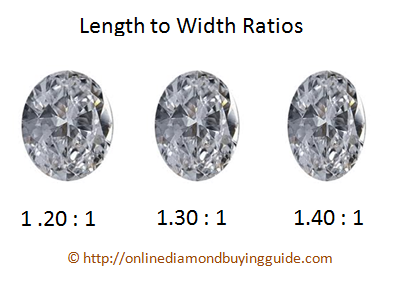
For an oval diamond to produce maximum brilliance while minimizing the bow tie effect, a depth percentage between 62% – 66% is recommended. Ovals with depths that fall below 60% usually have low pavilion angles which can cause prominent bow-ties to form.
When the diamond is cut to deep proportions (depth of more than 68%), the bow tie effect is reduced significantly. However, the optical performance of the diamond is also adversely affected. This results in a diamond that is usually dull and take on a darker appearance.
Recommended Proportions for Oval Cut Brilliant Diamonds
| Excellent | Very Good | Good | Fair/Poor | |
|---|---|---|---|---|
| Table % | 54% – 58% | 52% – 60% | 51% – 64% | Outside Ranges |
| Depth % | 62% – 66% | 60% – 68% | 56% – 70% | Outside Ranges |
| Polish/Symmetry | Excellent – Very Good | Good | Outside Ranges | |
| Length to Width | 1.30 – 1.35 | 1.25 – 1.29 1.36 – 1.40 |
1.20 – 1.24 1.41 – 1.45 |
Outside Ranges |
| Girdle Thickness | V. Thin – Slightly Thick | V. Thin – Thick | Outside Ranges | |
| Culet Size | None | Very Small | Small | Outside Ranges |
* Note: The recommended proportions for oval cut diamonds should be used as a reference only. It is designed to help you eliminate poorly cut stones and narrow down your choices. Subjective observations for personal tastes and tangible light performance data like ASET images should always take higher precedence.
Examples of Oval Diamonds With Different Outlines And Shape Appeal
Buying fancy cuts without seeing the diamond is a mistake many consumers make at places like Bluenile. This is because most oval diamonds are cut to dismal proportions and it is very easy for the uneducated customer to make a bad purchase.
Below are some examples that show diamonds with poor outlines when they aren’t cut properly and sadly, these kinds of “oval” diamonds are common sights in the market.
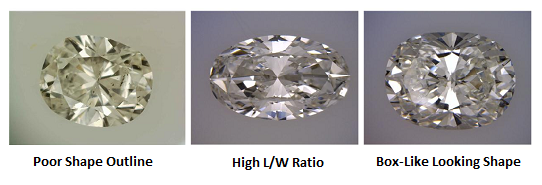
Seriously, do the diamonds look oval to you? They take on an elliptical appearance instead.
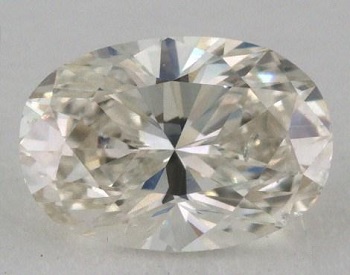
The uneven bellies are a result of poor symmetry and looks plain awful.
NEVER Commit the Same Mistakes Others Make
As you can see, buying fancy shapes based solely on a grading report isn’t a wise thing to do. I need to stress the importance of working with a jeweler (e.g. James Allen) who is able to provide magnified images/videos for your examination. On top of that, you need someone who is able to provide tangible light performance information to help you make an educated purchase decision.
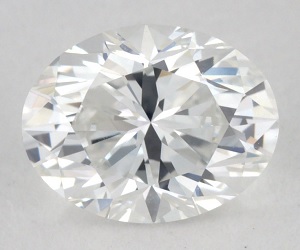
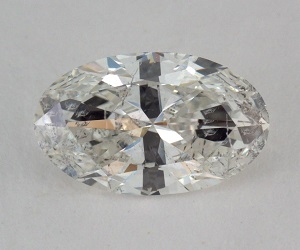
You want to buy brilliant looking stones (left) and avoid the majority of ghastly ones (right).
Like some other fancy cuts, oval diamonds have an intrinsic bowtie effect that can be seen from a face up view. This is an attribute you need to be careful with during your selection process. On the following page, we will delve deeper into this…
>>
